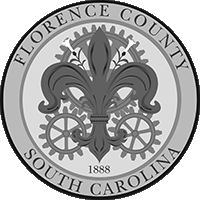On Thursday evening, April 21, the Florence County Museum will be hosting a public lecture in connection with its current exhibit, In Times of War. The lecture, titled Unexpected Encounters at the Crossroads of Art and History: The Newly Recovered World War II Watercolors of Artist-Soldier Gerd Berretz (1911-1990) will focus on the museum’s recent acquisition of ten works of wartime art found in the home of a local WWII veteran.
The exhibit, which is showing eight of the ten works by artist and former German soldier, Gerd Berretz, also contains paintings by three of the most significant military and political figures of the 20th century: Sir Winston Churchill, Dwight D. Eisenhower, and Adolf Hitler.
“It is not so common knowledge that all three of these influential military heavyweights were artists in their own right,” says museum curator, Stephen W. Motte. “What is interesting is that in spite of their vast political and ideological differences during the war, they all shared a familiar ground in art.”
The collection of watercolors was discovered by the museum in 2012, and it has taken four years of research and conservation to finally bring them to the public.
“The Berretz watercolors show the harsh and violent realities of war, and its effect on individual soldiers as the conflict played out on the battlefields of the Eastern Front,” Motte said, adding, “It’s a striking contrast against the paintings by these other men, especially to the placid Viennese cityscape by Adolf Hitler.”
Both the lecture and the exhibit are a collaborative effort. The three paintings by Hitler, Churchill and Eisenhower are on loan to the museum from a local private collection. The contents of Thursday’s lecture will be composed by Dr. Samuel H. Howell, Assistant Professor of Art History at Francis Marion University. The presentation will be delivered Mr. Motte.
“Sam Howell is a mentor of mine. I knew that he would be the perfect scholar for this project,” Motte said. “The purpose of the lecture will be to put the subject matter and stories of these paintings into the larger context of 20th century art and world political history. It’s a fascinating story.”
Gerd Berretz was born in Köln, Germany in 1911 and was drafted into the Nazi infantry in 1939. He was a professional commercial artist and worked for several years for the Bayer corporation in Berlin before hostilities intensified. He kept a sketchbook on the front, capturing the war from a first-hand perspective.
After being wounded in battle in 1942, he created 36 watercolor paintings of war scenes based on his sketchbook materials and sent them off to be exhibited in Berlin. When the war ended, he was told that the paintings had been lost, most likely destroyed during an air raid. He never saw them again. Gerd Berretz continued to work as a graphic artist in Germany until his death in 1990.
During some research in preparation for the historical exhibits at the new Florence County Museum, which was still under construction, Motte was conducting an interview at the home of a local veteran. According to Motte, at the end of the interview the gentleman pulled from behind a cabinet in his living room, a small portfolio.
“He put the portfolio down on the ottoman of the chair I was sitting in and opened it. I think I could actually feel my pupils dilating when I saw the paintings. It was then when I realized that the story was much larger than the one I had originally gone there to hear.”
“They were in bad shape – torn, dirty, covered in mold and eaten away by bugs,” Motte said. In spite of the paintings very poor condition, Motte says he could immediately see that their quality surpassed that of an average artist, and that the subject matter had been gathered from the artist’s personal experience rather than from his imagination, or from second hand sources like photographs.
The paintings were then given to the museum for study, and an intense effort was made to determine the artist’s full identity and to learn more about his work, but all leads were dead ends.
It was not until almost three years later, in the fall of 2015, that the museum first learned the real details about the artist who created the paintings. The Berretz name suddenly appeared on lostart.de, a website operated by the German Center for Lost Cultural Property (Deutsche Zentrum Kulturgutverluste). The museum then made contact with the German authorities.
“We were put on hold for several days,” Motte recounts. “I nervously waited for some indication about what our next move should be, and was ready to be told to hand them over to the German government. Instead, I received an unexpected email.” The email was from Evelyn Berretz-Damen, the daughter of the artist.
Since that time, the museum has received permission from the Berretz family to retain the works permanently as part of their collection. Evelyn and her husband Bernard have made arrangements to visit Florence. Upon their arrival, she will be seeing these works by her father for the first time. They will both be in attendance during Thursday’s lecture.
The exhibition can be viewed during regular hours in the museum’s Special Exhibit Gallery, on the first floor of its west wing.
The lecture will be held in the lobby of the Florence County Museum. It is scheduled to begin at 7 pm, Thursday, April 21. The gallery will be open immediately following the lecture for those who wish to see the paintings that night.






